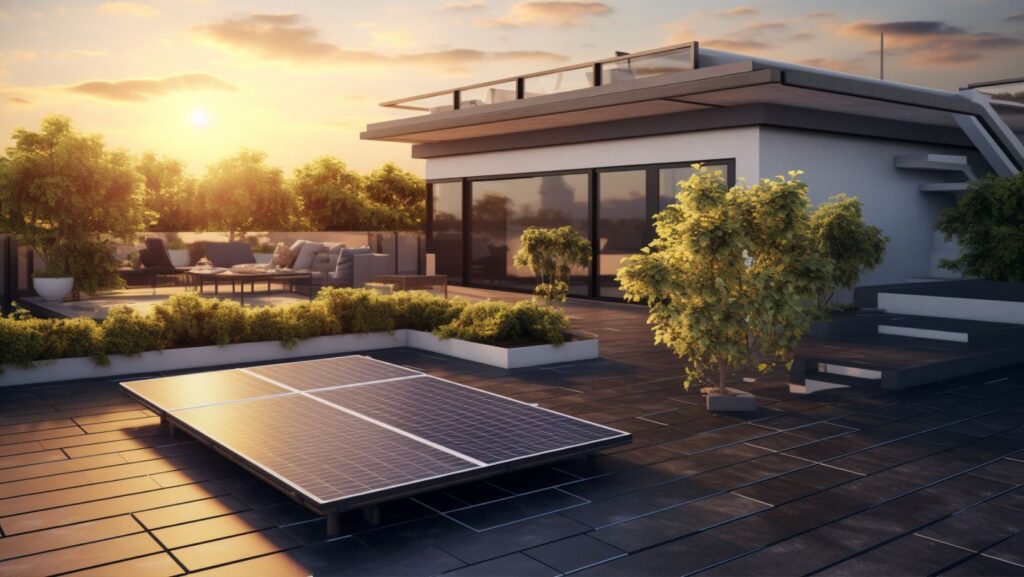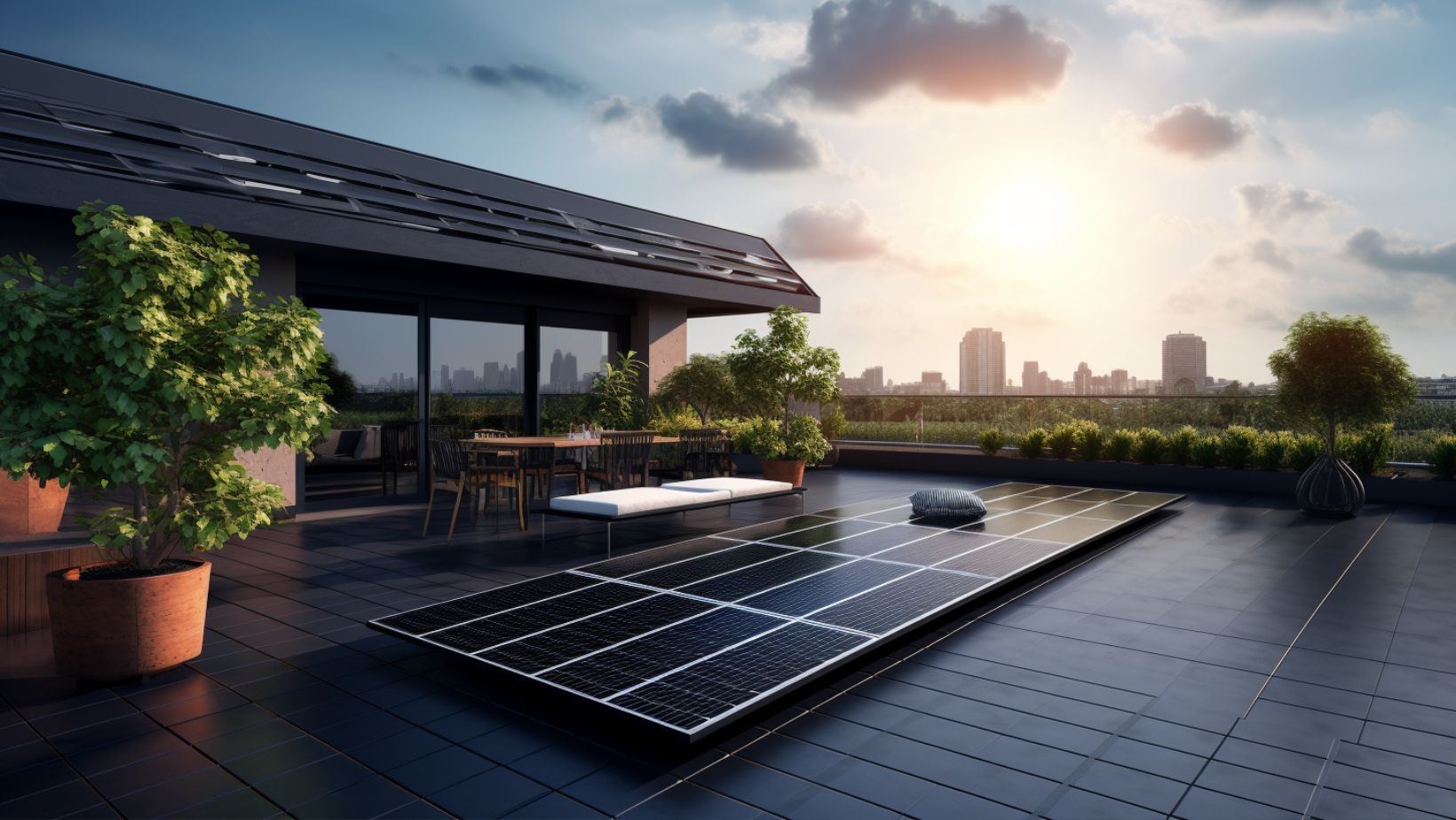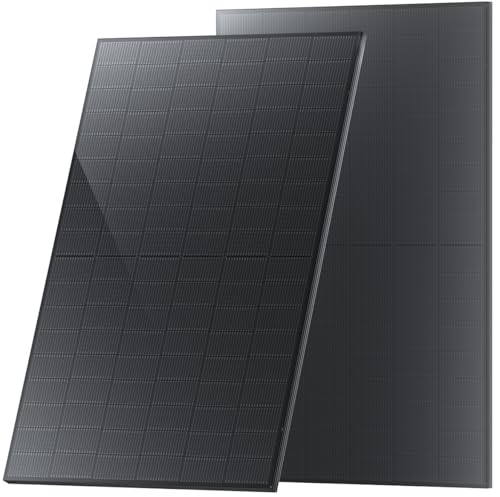Imagine walking through a world bathed in endless sunlight, where your energy needs are met by a clean and renewable source. In this article, we invite you to explore the benefits of high-efficiency solar panels and discover how they can help you make the most of solar energy.
We’ll delve into the factors you need to consider when evaluating these panels and provide valuable insights on an individual level. So, join us on this illuminating journey as we shed light on the power of high-efficiency panels.
Key Takeaways
- High-efficiency panels can generate more electricity and meet your power needs more effectively.
- They save on energy bills in the long run and offer cost savings through reduced maintenance requirements.
- High-efficiency panels contribute to a cleaner and greener environment by reducing carbon footprint and greenhouse gas emissions.
- Factors to consider when evaluating high-efficiency panels include space constraints, upfront cost, climate considerations, and the levelized cost of energy (LCOE).
Benefits of High-Efficiency Panels
When it comes to increasing power generation and saving costs, high-efficiency solar panels are a game changer. These advanced panels harness more sunlight and convert it into electricity at a higher rate, resulting in greater energy production. With their improved performance, not only can you generate more power to meet your needs, but also save on your energy bills in the long run.
Increased Power Generation
By installing higher-efficiency panels, you can generate more power and energy per square foot in your solar system. These panels have a greater ability to convert sunlight into electricity, resulting in increased efficiency and higher solar power output.
With high-efficiency panels, you can make the most of your available space and maximize the power generation potential of your solar system. In fact, compared to lower efficiency panels, fewer high-efficiency panels may be required to achieve the same power output in non-area-constrained systems.
This means that you can generate more electricity while utilizing less space, making high-efficiency panels a valuable choice for both residential and commercial solar installations. To illustrate the benefits of high-efficiency panels, consider the following table:
| Panel Efficiency (%) | Power Output (W) per Square Foot |
|---|---|
| 15 | 10 |
| 20 | 13.3 |
| 25 | 16.7 |
| 30 | 20 |
As shown in the table, as the efficiency of the panels increases, the power output per square foot also increases. This demonstrates the significant impact that high-efficiency panels can have on optimizing the energy production of your solar system.
Cost Savings
To save money on your solar installation, you should take into account the potential reduction in labor and materials costs associated with high-efficiency panels. These panels not only generate more energy, but they also require less maintenance over time. Here are some key points to consider:
- Installation Process: High-efficiency panels are designed for easier and quicker installation compared to traditional panels. This can save you both time and money during the installation phase.
- Maintenance Requirements: High-efficiency panels have fewer maintenance requirements due to their advanced technology and durability. This means less time and money spent on cleaning, repairs, and replacements.
- Energy Output: High-efficiency panels produce more energy per square meter compared to standard panels. This increased energy output allows you to maximize your solar system’s potential and reduce your reliance on grid electricity.
- Long-Term Savings: The combination of lower installation costs and reduced maintenance requirements translates into long-term savings on your solar investment. You can expect to see a significant return on your investment over time.
- Environmental Benefits: By choosing high-efficiency panels, you are not only saving money but also contributing to a cleaner and greener environment. High-efficiency panels have a lower carbon footprint and help reduce greenhouse gas emissions.
Factors to Consider When Evaluating High-Efficiency Solar Panels
When evaluating high-efficiency panels, there are several key factors to consider. First, space constraints may impact the maximum number of panels that can be installed, affecting the overall energy generation potential.
Second, upfront cost is an important consideration as high-efficiency panels tend to be more expensive than standard ones. Additionally, climate considerations play a role in determining the effectiveness of high-efficiency panels in different regions.
Lastly, the levelized cost of energy (LCOE) should be calculated to compare the long-term financial benefits of high-efficiency panels. It is also crucial to negotiate pricing with suppliers to ensure the best return on investment.
Space Constraints
Although high-efficiency panels are more expensive, they are worth considering for space-constrained solar systems due to their ability to generate more power in limited roof or installation areas. When dealing with installation challenges and limited space utilization, high-efficiency panels can provide significant benefits in system optimization.
Here are some key points to consider:
- Space-saving design: High-efficiency panels are often smaller and more compact, allowing for better utilization of limited roof or installation areas.
- Increased power output: These panels have a higher conversion efficiency, meaning they can generate more electricity from the same amount of sunlight, maximizing energy production in limited spaces.
- Flexibility in installation: High-efficiency panels can be installed at various angles and orientations, adapting to unique space constraints and optimizing solar energy capture.
- Improved aesthetics: With their sleek and modern design, high-efficiency panels can enhance the visual appeal of your solar system, making it blend seamlessly with your surroundings.
- Long-term cost savings: Despite their higher upfront cost, high-efficiency panels can provide greater energy generation over time, leading to significant savings on electricity bills.
Considering these factors, high-efficiency panels offer a compelling solution for space-constrained solar systems, providing efficient energy production while optimizing limited roof or installation areas.
Upfront Cost
When considering solar energy for your home, it’s important to evaluate the upfront cost of installation. Negotiating prices with solar installers can help make the most of your investment, even if space constraints present challenges. The type of panels you choose can affect the overall economics of your solar system.
High-efficiency panels may have a higher initial cost, but they can generate more electricity per square foot, maximizing the energy output of your residential installation. It’s worth noting that as solar technology continues to advance, future developments could lead to more affordable high-efficiency panels.
Climate Considerations
To optimize the performance of your solar system, it’s essential to take into account the climate conditions in your area. The cost effectiveness of high efficiency panels and the impact of temperature on panel performance are important factors to consider.
Here are some key points to help you understand solar panel efficiency in different climates:
- In hot climates, high efficiency panels with a lower temperature coefficient can produce more electricity compared to standard panels.
- High efficiency panels are designed to maintain their performance even in extreme temperatures, making them a good choice for areas with hot summers.
- In colder climates, high efficiency panels may not provide a significant advantage in terms of electricity output, as lower temperatures can actually improve the efficiency of standard panels.
- It’s important to consider the overall climate conditions, including temperature ranges and sunlight intensity, when determining the cost effectiveness of high efficiency panels.
- Consulting with a solar energy professional can help you assess the specific climate conditions in your area and determine the most suitable panel options for your needs.
Levelized Cost of Energy (LCOE)
When considering the use of high-efficiency panels for solar energy, it is important to assess their price competitiveness, environmental impact, and market trends.
One way to evaluate the economic feasibility of these panels is by analyzing the Levelized Cost of Energy (LCOE). LCOE takes into account the upfront costs, maintenance expenses, and expected lifespan of the panels to determine the average cost per unit of energy produced over time. By comparing the LCOE of high-efficiency panels with conventional panels, you can assess their long-term economic benefits.
Additionally, analyzing market trends can provide insight into the demand and availability of high-efficiency panels. Understanding the price competitiveness and market trends of high-efficiency panels is crucial for making informed decisions regarding solar energy investments.
Considering their environmental impact alongside these factors can help you maximize the benefits of solar energy while minimizing the carbon footprint.
Related Post: Solar Cost Metrics Exposed: The Price per Watt and LCOE.
Negotiating Pricing
Negotiating pricing with installers is crucial for determining the economic return of high-efficiency panels. To help you make the most of solar energy and achieve competitive pricing, consider the following strategies:
- Research and compare multiple installers to find the best deals and ensure you’re getting the most value for your money.
- Seek multiple quotes and use them as leverage to negotiate lower prices.
- Consider forming a group with neighbors or community members to collectively negotiate discounted rates.
- Explore financing options, such as solar loans or leasing, to help reduce upfront costs and make the investment more affordable.
- Stay informed about federal and state incentives, grants, and tax credits that can further reduce the overall cost of installing high-efficiency panels.
Factors to Consider on An Individual Level
Residential customers, commercial and industrial customers, future needs and considerations, price comparison, and lifetime savings are all key points to consider when discussing solar energy.
As a residential customer, you will need to evaluate the size and location of your property, as well as your energy needs, to determine the optimal solar energy system for your home.
For commercial and industrial customers, factors such as energy usage, peak demand, and available space for solar panels will be important considerations.
Additionally, it is important to consider future needs and advancements in solar technology, as well as comparing prices and calculating potential lifetime savings before making a decision.

Residential Customers
For residential customers, high-efficiency panels offer significant advantages when it comes to maximizing solar energy production. These panels are designed to convert a higher percentage of sunlight into electricity, allowing homeowners to generate more power from the same amount of sunlight.
Here are some key points to consider:
- Residential customer preferences: Many homeowners are looking for ways to reduce their carbon footprint and save money on energy bills. High-efficiency panels can help meet these goals by providing more electricity from the same roof space.
- Installation process: Installing high-efficiency panels is similar to installing standard panels. However, due to their increased efficiency, fewer high-efficiency panels may be required to meet the energy needs of a household.
- Government incentives: In many regions, there are government incentives available to homeowners who choose to install high-efficiency panels. These incentives can help offset the upfront costs and make the switch to solar energy more affordable.
- Increased energy production: With high-efficiency panels, homeowners can generate more electricity, leading to greater energy self-sufficiency and potential savings on electricity bills.
- Environmental impact: By maximizing solar energy production, residential customers can reduce their reliance on fossil fuels and contribute to a cleaner, more sustainable future.
Commercial and Industrial Customers
When it comes to reducing peak power consumption and avoiding demand charges, commercial and industrial customers like yourself can benefit greatly from the use of high-efficiency panels.
These panels are designed to convert sunlight into electricity more efficiently than standard panels, resulting in increased energy production and reduced energy consumption.
This is particularly important for commercial and industrial customers who often have higher energy demands due to their larger operations and increased demand for power during peak hours.
By utilizing high-efficiency panels, you can effectively manage your energy consumption and reduce the reliance on grid power, which in turn helps to lower your electricity bills and minimize the impact on the environment.
Additionally, high-efficiency panels can help you meet the increased demand for electricity during peak hours, thus avoiding costly demand charges imposed by utility companies.
Overall, incorporating high-efficiency panels into your commercial or industrial facility can optimize your energy usage and provide significant cost savings.
Future Needs and Considerations
As a commercial or industrial customer, it’s important to anticipate your future energy needs. This includes considering the potential use of electric vehicles or air source heat pumps and ensuring that your solar panel system can accommodate these demands.
To make the most of solar energy and prepare for future growth, here are some key considerations:
- Evaluate your energy demand and estimate the additional energy required for electric vehicles or air source heat pumps.
- Assess the available space for expanding your solar panel system to meet the increased energy demand.
- Consider installing high-efficiency panels to maximize the energy output and optimize your solar investment.
- Conduct a cost-benefit analysis to determine the economic viability of expanding your solar panel system.
- Take into account the environmental impact of your energy consumption and how solar energy can help reduce carbon emissions.
Price Comparison and Lifetime Savings
To evaluate the viability of high-efficiency panels, you should compare prices with different installers and consider the balance between lifetime savings and increased installation costs.
It is crucial to conduct a thorough price comparison to ensure you are getting the best deal for your investment. By obtaining quotes from multiple installers, you can compare the upfront costs and determine the most cost-effective option. However, it is important to not solely focus on the initial price.
Consider the return on investment and the lifetime cost of the panels. High-efficiency panels may have a higher upfront cost, but they can provide significant long-term savings through reduced electricity bills. Additionally, these panels often have a longer lifespan, resulting in lower maintenance and replacement costs.
Conclusion
High-efficiency panels offer numerous benefits and should be considered when harnessing solar energy. These panels not only maximize the amount of solar power generated but also reduce overall costs and increase the return on investment.
Factors to consider when evaluating high-efficiency panels include their efficiency rating, durability, warranty, and cost-effectiveness. It is important to thoroughly research and analyze these factors to make an informed decision.
By utilizing high-efficiency panels, individuals can symbolically embrace the potential of solar energy and contribute to a sustainable future.








